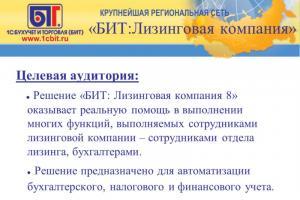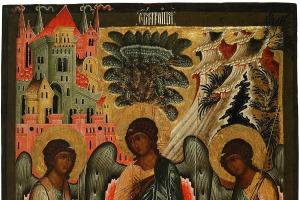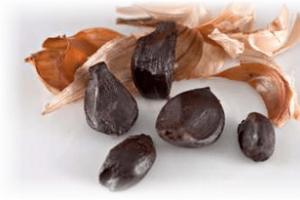(1 of 14)
Landscape design of a site is a real art, which involves a whole group of specialists. Landscape design is distinguished by individuality, because you are unlikely to find two identical plots: each house with its surrounding area and landscape is unique. Therefore, designers and planners create a landscape design that is suitable only for you and where all your dreams are realized. Landscape design is only limited by your imagination. For example, you need to beautifully decorate your terrace for a pleasant pastime. Or maybe you dream of a small pond with a cascade of murmuring water. If the project includes a swimming pool, then a changing cabin is needed, and the ground around the entire perimeter must be covered with safe materials. Ornamental plant nursery We are engaged landscaping personal plots, dachas, suburban and urban areas. Our task is integrated approach to landscaping Our plant nursery employs only competent and qualified specialists in various fields. Each of us has unique knowledge of planting and replanting plants, pruning trees and shrubs, we will tell you how to properly care for your garden and give recommendations on landscape design.Landscape design of the site
Having equipped a fountain, you can listen to the sound of falling water. Some people do not need the presence of ponds on their plot, then a landscape design specialist can create the appearance of water with the help of a “dry” stream. The imagination of our landscape designers is limitless, and a photo gallery of our completed projects will help you in determining what your summer cottage should be like.
Our company employs creative individuals who are experienced and highly qualified specialists who are ready to fill your garden with life, which will bring the joy of communicating with it for many years. Our studio landscape design strives to preserve and improve the existing natural environment on the site. In this regard, each tree, shrub or part of the relief, at your request, will become integral organic elements of the new garden design.Our specialists love their work and will be happy to provide any assistance!
landscapingConifersDeciduous Shrubs Fruit Lianas Annuals Perennials |
Amur velvet is a perennial with a spreading crown, belonging to the Rutov family. With its impressive size, the tree can confidently claim the title of giant. Now it is actively used for landscaping parks, streets, and garden plots.
This beautiful and hardy plant performs not only a decorative function, but also treats many diseases. Its other names are phellodendron, Amur cork tree. It was called cork because the surface of the bark is wrinkled and velvety.
Place of growth
The tree grows alone or in small groups. In our country, it is widespread in Sakhalin, the Kuril Islands, the Khabarovsk Territory, Far East. It also grows in other countries ─ Japan, Korea, China.
Velvet prefers hills, mountain slopes no higher than seven hundred meters above sea level, and deciduous forests. This is a relict plant, considered a living natural monument. The history of its appearance comes down to the Ice Age. Cultivated specimens have now begun to be imported and bred in new territories ─ in Asia, America, Europe, and the Caucasus.
Peculiarities
This dioecious deciduous tree is a long-liver, growing in one place for up to three centuries. Appearance has similarities with common ash.
The height reaches a maximum of 26-28 meters, and the growth rate is very rapid. The trunk thickness is 1-1.5 meters. It is covered with gray bark, velvety and soft to the touch. In young plants it is completely smooth and has a silvery tint. After cutting off the cork layer, the bark darkens.
Thanks to the powerful rod system, the impressive mass of the plant is well supported.
The dark green, odd-pinnate leaf blades are lanceolate in shape and located on the central petioles. The edges are jagged, which gives them decorative look. When you rub the leaves in your palms, they give off a specific resinous smell. They bloom at the end of May or even at the beginning of summer. The crown is tent-shaped in wide areas and raised high in forest areas.
Flowers small size, inconspicuous, collected in inflorescences. The petals have a yellow-green tint. The flowering period of Amur velvet occurs at the beginning of summer. At this time, insects are actively collecting nectar. The tree blooms for the first time only in the 18-19th year of life.
The fruits have a spherical shape and a glossy surface, similar in appearance to pearls. Inedible, have a specific smell. Maximum they stay on the tree until mid-winter.

The berries ripen in September. The harvest lasts from August to early autumn. One tree produces approximately ten kilograms of berries. Before storing, be sure to dry them for outdoors. One berry contains from 5 to 10 seeds. The latter have a patterned surface and a teardrop shape.
Landing
Growing phellodendron is a painstaking and meticulous process because it extends over time. To successfully grow it, certain conditions must be met. First of all, this is the right place to plant the tree. Since the breed is light-loving, the area should be well lit or at least with partial shade. Shaded places are extremely undesirable. The soil needs to be slightly acidic, moist and fertile. Sand is absolutely not suitable. Stagnation is unacceptable groundwater. The right time of year is early spring, when the earth has already warmed up a little.
Important rules:
- When planting, it is important to consider the lifespan of Amur velvet and its future size. There should be no buildings or communications nearby.
- Planting is carried out with grown seedlings. It is best if these are mature, six-year-old plants. They can be purchased in specialized stores. Since they tolerate transplantation well, they very soon take root in a new area.
- Planting is carried out in autumn or spring.
- If several trees are planted, then an interval of at least 5 meters should be maintained between them. Each specimen requires this space for a comfortable existence.

Algorithm of actions:
- Blank landing pit. Its dimensions should exceed the size of the root system of a young plant by a third.
- If the soil has increased density, then a drainage layer consisting of crushed bricks should be laid in the hole.
- Sprinkle the nutrient mixture on top. Suitable composition: turf soil, humus, river sand.
- Spread the roots, place the seedling, sprinkle with soil.
- Provide the plant with abundant watering. Pour a bucket of water under each specimen. Under no circumstances should the soil dry out for the first five or six days. The best option- the landing procedure is carried out in rainy weather.
- Mulching the soil with dry grass, tree bark, sawdust, sunflower husks.
Reproduction
Amur velvet can be propagated in two ways: seeds and cuttings.
Seeds
For sowing, only fresh seeds from ripened fruits are taken. It is very easy to determine their maturity. If you place the fruit in water, oil circles will form from the ripe specimen. Freshly harvested seeds should be sown before winter. If sowing is planned for early spring, then they must undergo preliminary stratification for three months. This is aging in cool conditions (in a cellar or refrigerator) until germination. If such a procedure has not been carried out, then pre-soaking the seeds in hot water will do. This is done three or four days before sowing. Next, they are placed in the soil to a depth of 2-3 cm. The seedlings will grow better if the soil is first fertilized with potassium permanganate or phosphate fertilizers. In the future, you should loosen and mulch the soil, regularly water the area, and weed out the weeds.

The germination rate of Amur velvet is from 60 to 80%, which is a very good indicator.
Cuttings
Cuttings are cut in spring. For several weeks before rooting, they are buried in moist soil. This is not a very popular method, because root suckers do not have high rooting ability.
Care
While the phellodendron is young, it must be carefully and painstakingly cared for. But a matured and stronger specimen no longer requires additional attention and care.
- Amur velvet should be watered frequently and abundantly. Especially if dry periods occur.
- To prevent the soil from drying out, the area can be mulched with wood chips or peat. Another option is to plant lawn grass nearby.
- Feeding is carried out in the spring. Suitable fertilizers are ammonium nitrate, urea, mullein.
- During the same period, pruning of dried branches is done.
- The plant has a thick cork layer, so whitewashing the trunk is not necessary. He is not afraid of the spring sun.
- Frost-resistant, tolerates cold winters well. Shelter for the winter period is required only for seedlings. Tree trunk circle covered with fallen leaves. The trunk is wrapped in burlap in one or two layers.
- When frost damage appears on young trees, they must be treated with any antiseptic.
In general, the plant is unpretentious. In city conditions, it easily adapts even to high air pollution.

Diseases and pests
The Amur cork tree is one of those rare cases when the plant is completely unaffected by diseases and pests. This becomes a considerable benefit for gardeners involved in their cultivation.
Medicinal properties
Phellodendron has found wide application in folk recipes many countries. IN therapeutic purposes Almost all parts of the plant are used. They are used to prepare decoctions, infusions and tinctures, and ointments. Even in ancient times, the Chinese knew the miraculous power of the Amur cork tree. The chemical composition of phellodendron contains saponins, tannins, and coumarins. The leaves are rich in essential oils, flavonoids, phytoncides, tannins.
Preparations made on its basis have many useful and medicinal properties. They have antimicrobial, hemostatic, antipyretic, hypotensive, and fungicidal effects.
IN folk medicine the plant is used to treat a number of diseases and pathological conditions.

Among them:
- arthritis and arthrosis;
- allergies;
- high blood pressure;
- gastroduodenitis;
- jades;
- skin rashes;
- diabetes;
- pneumonia;
- acute respiratory viral infections;
- lymphadenopathy;
- stomatitis.
During treatment you will have to stop drinking coffee, strong tea, and alcoholic beverages. Also, smoking cigarettes is strictly not recommended.
Honey
Its quality and quantity directly depend on weather conditions. This is due to the fact that the flowering period is very short. In case of bad weather, bees will not be able to collect nectar, but in good weather, Amur velvet will be an excellent honey plant. Velvet honey is considered elite and has a number of unique properties. Among them:
- long term storage;
- low glucose content;
- lack of crystallization.
It's not cheap, but the price is well justified by the quality. It is used to treat tuberculosis, boost the body's immune strength and correct hormonal imbalances.

Bark
The bark is used as a source of natural cork. It is flexible, environmentally friendly, waterproof, and has increased resistance to chemicals. Valuable material is widely used in industrial purposes. Application options:
- linoleum production;
- wine corking;
- production of goods for fishermen.
Cork harvesting for industrial purposes runs from mid-June to mid-August.
Wood
It has a pleasant color and beautiful pattern in all cuts. It has excellent technical characteristics:
- does not rot;
- easy to process;
- shines beautifully after good polishing;
- not damaged by fungus.
It has found its application in furniture production.
Landscape design
Amur velvet is loved by landscape designers for its decorative crown. With its splendor and luxurious appearance, it can decorate any site or park area. In addition, the plant helps purify the air from bacteria. For this reason, it is highly valued in gardening construction.
Cork looks good in combination with barberry, juniper, thuja and others low growing bushes. To shade the trunk, honeysuckle and currants are suitable. Look impressive joint plantings with maple, linden, birch and spruce. They resemble a fairy forest.
If you plant lawn grass under the openwork crown, this will make the area neat and well-groomed.
Gardeners who want to create a favorable atmosphere in their garden should pay attention to Amur velvet. Also, it will be of interest to collectors of relict plants and hereditary beekeepers.
Amur velvet is very common in park and garden culture. Growing Amur velvet is exciting activity, because a tree of extraordinary beauty can decorate any garden and any public garden. Cork is obtained from this tree, which makes it very valuable in production. It is far from Full description This majestic tree is sure to be the highlight of your garden.
Description
In the wild, velvet is a majestic tree, sometimes reaching a height of 25-30 meters. Velvet lives for more than three centuries. But in culture this tree does not grow to such a height, which does not at all affect the wonderful decorative qualities of Amur velvet.
The crown of this beautiful tree is spherical, but if velvet is planted close to other trees, its crown will stretch upward. The bark of the tree is velvety to the touch, light gray, young shoots are also gray. The leaves of Amur velvet are colored bright green color and reach a length of up to 35 cm. The edges of the leaves are jagged, which looks very decorative.
At the end of May the tree blooms and blooms for 10-12 days. During this period, the tree literally hums, because insects collect nectar from flowers. Velvet attracts many bees and is a good honey plant. The fruits ripen in September; they are bitter and inedible. The fruits of Amur velvet are used in folk medicine to treat many diseases.
Growing Amur velvet
This tree is extremely demanding of soil moisture. Productivity also depends on the composition of the soil. The root system of this giant goes deep into the ground and is very well developed. Although the tree tolerates winters, cold winds and drought well, in cultivation it must be watered regularly to obtain medicinal fruits.
Reproduces predominantly by seed method, but at a young age the trees tolerate transplantation to a new place well, and therefore you can buy velvet in a nursery.
In nature, velvet can be found in Japan, China, Taiwan, and Sakhalin, but the most widespread distribution of velvet in nature is in the regions of Asia and the Caucasus. You can also find this tree on the territory North America, but extremely rarely.
For planting in a public garden, park or on a personal plot, it is better to purchase seedlings that are six years old. It is better to purchase seedlings from well-known nurseries in order to buy really high-quality planting material.
Best time for planting velvet - this is the period of leaf fall or a moment of rest. When planting a group of trees or in a garden, leave a distance of at least five meters between the trees - this is exactly the space that velvet needs for proper growth and development.
Read also: Astilbe flower varieties
Preparing for landing

Planting velvet is no different from planting other types of trees. For seedlings of these giants, it is necessary to dig deep enough holes. The planting hole should be one third larger than the root system of the young tree. The depth of the hole should be at least 90 cm. It is best to dig a hole up to a meter deep. Planting on fertile soils is desirable.
If you plant a tree on heavy soil, then drainage should be installed at the bottom of the hole for its root system. Suitable as drainage material broken brick or a mixture of crushed stone. Drainage should be laid at the bottom of the pit with a thickness of at least 20 cm.
Next, after drainage, a layer of nutritious soil or a mixture of river sand, leaf soil and humus, taken in equal parts, should be placed in the hole. When planting, keep in mind that you should not bury the root collar of the seedling. The root collar must be at ground level.
When planting, the seedling should be watered generously. A large bucket of water is enough for one seedling. Experienced gardeners Choose rainy weather for planting velvet so that young trees are well watered. After planting, the velvet should be watered generously for five days. It is also recommended to mulch the soil around the seedlings so that the moisture does not evaporate; the mulch is laid in a layer of approximately 7-10 cm. It can be used as mulch sawdust, tree bark, dry grass, sunflower husk.
Feeding young trees
After planting, the plant must be fed. You can feed the plant with mullein solution.
In the spring, in the first year after planting, young trees are fed with a mixture of 25 grams of saltpeter, 1 kg of mullein (necessarily fresh), 15 grams of urea.
In the first year after planting, but already in the fall, young trees are again fed with a mixture of mullein and nitroammophoska. Take 1 kg of mullein and a spoonful of nitroammophoska and mix it in a bucket of water. Under young tree It is quite enough to pour out one bucket of such a solution, but mature trees need two or three buckets of such fertilizer in spring and autumn. The main care for velvet in the first couple of years is regular watering and fertilizing.
Read also: Features of growing Incarvillea delawaya
Tree care
If you need to replant velvet, then choose a new area with fertile soil for it. The best soil for him - fertile loam. Heavy soils are not suitable for this tree. Velvet is resistant to heat, and therefore it will not be so troublesome.
Immediately select a suitable area for the tree, taking into account its long lifespan and spreading crown. There is no need to allocate a site for it, next to which there may be construction. Don't forget about your neighbors - velvet needs sun.
The best time to transplant young trees is late autumn or spring. But with a closed root system, velvet along with a lump of earth can be replanted throughout the entire season.
In case of summer transplantation, it is necessary to monitor the soil moisture so that the transplanted tree does not dry out. The main care in this case is abundant watering and mulching.
Tree care involves regular watering during the dry period and fertilizing. Pruning is also carried out, but with great care. Places of cut branches must be treated with garden varnish. Typically, velvet is trimmed to give the tree a decorative and well-groomed appearance. However, gardeners recommend not to interfere with the development of the tree and let it grow on its own, without pruning.
Lawn grass should be sown under the crown of the tree, although many gardeners simply dig up the circles around the tree trunk and mulch them with any substrate. For Amur velvet, both mulching and lawn grass. If you dig up the soil, this should be done twice a year - in spring and autumn to a depth of at least 25 cm.
Preparing for winter
Be sure to cover the surrounding circles of velvet for the winter. To prevent the trunk from being damaged by frost, it is recommended to wrap young specimens in burlap. But if frost does damage the trunk, then the damaged areas should be treated with an antiseptic and covered with a thick layer of garden varnish. But the older the plant is, the easier and better it will tolerate cold winters. Only young trees require painstaking self-care; adult specimens are no longer so whimsical. Since time, Amur velvet will thank you with its lush beauty and unpretentiousness.
Growing velvet from seeds
If you decide to grow this majestic plant from a tiny seed, start by preparing the selected area. Choose a place with fertile soil and dig it deeply, ensuring good soil moisture. The seeds are planted to a depth of approximately 2 cm. After you plant the seeds, the planting site should be mulched.
Read also: Garden bean - planting, care, propagation
You can take seeds from dried berries velvet, but first they must be stratified. You can simply leave the seeds in the soil over the winter, where they will undergo natural stratification. You can also sprinkle the seeds with damp sand and place the container in the refrigerator for the whole winter, where they will be stored at a constant temperature.
When the seeds germinate, the shoots of young velvet will be very demanding to care for. It will be necessary to regularly weed, loosen and water the young shoots. Young plants will need to be protected from strong winds. For the winter, young shoots must be securely covered.
As soon as the young trees begin to grow, their root system will strengthen and become powerful. Stronger seedlings will be more resistant to wind and frost, and will not require such painstaking care. The best time to plant velvet is late summer or early autumn.
Amur velvet in garden design
Amur velvet is loved by many landscape designers for its majestic beauty and high decorative qualities. This plant is suitable for landscaping both large parks and very small garden plots. Despite its impressive size, this plant looks great on a plot of even 6 acres. In cultivation, this giant does not grow too large, but retains its high decorative value.
Beautiful, a big tree on the site - this is already part of the landscape, attracting close attention. Amur velvet can become a reference point in design personal plot. You can group around it various plants, create very interesting compositions from other trees, bushes and flowers.
Lawn grass grows well under the scattered, openwork crown of velvet, which makes it possible to plant it in the middle of lawns or flowering lawns, which will be easier to care for. Planted in a small group, these trees can create the illusion of a green area even in a small area.
Amur velvet looks great in the middle of the lawn, in a group with flowering bushes and annuals. Excellent neighbors for Amur velvet are pine, birch, oak, and spruce. Ornamental shrubs next to the velvet they will sparkle with new colors, and low thujas, barberries, and junipers become much more expressive, and caring for and planting this stately tree is not too difficult.
Amur velvet is a beautiful relict tree, common in our Far East and in the surrounding areas. The berries, leaves, and bark of this tree have long been used in folk medicine not only here, but in Korean and Chinese traditional medicine. Preparations based on it have many useful and medicinal properties. With their help, you can normalize blood sugar levels, lower blood pressure and solve some other health problems. How to use it, what medicinal properties and contraindications this tree has will be discussed in this article.
Amur velvet description where it grows
Amur velvet or cork tree is a beautiful deciduous tree of the Rutaceae family of the Velvet genus with a spreading openwork crown. In adulthood, the plant can reach a height of up to 25-28 meters, and the trunk is up to one meter in diameter.
The leaves of the tree are odd-pinnate and lanceolate in shape. The top ones are similar in shape to ash leaves. When rubbed in your hands, they release an unusual and not very pleasant aroma. The leaves bloom in late May or early June.
Amur velvet is a dioecious plant with small, inconspicuous flowers, collected in inflorescences with greenish petals, which bloom in late June. Pollination occurs by insects.
At the end of summer or early autumn, the seeds ripen - round, small black berries with a slight tint, similar to black pearls. After ripening, the berries quickly fall off. Some can remain in clusters until winter. They taste bitter with a resinous odor.
The tree trunk is covered with soft gray bark, similar to cork. In fact, it was because of her that it got its name. In young plants it may have a silvery tint.
This beautiful tree is a relict tree that has survived to this day, having survived the global glaciation.
It prefers fertile, moist soils. It is very resistant to drought due to its powerful root system that penetrates deep into the ground and is not afraid of winds. Therefore it can be easily carried harsh winters. The tree is long-lived. Can grow up to 250 years.
Here it grows in the Khabarovsk Territory and the Far East, in the Kuril Islands, Sakhalin, in the Amur and Primorye regions.
It also grows in Korea, China, and on the island of Taiwan. Found in Japan. How ornamental plant decorates many parks all over the world.
Amur velvet beneficial properties
All parts of the plant: leaves, fruits and bark contain in their chemical composition:
Alkaloids;
Coumarins;
Tanning compounds;
Saponins.
The leaves of the plant contain:
Flavonoids;
Essential oil;
Phytoncides;
Vitamins.
The most valuable are the fruits of Amur velvet, which contain:
Essential oil;
Coumarins;
Alkoloids.
From a medical point of view, the most interesting alkaloid is berberine. Included essential oil contains limonene, geraniol, myrcene and other useful compounds.
Some drugs are obtained from this tree that have antiseptic, hemostatic, tonic, and antipyretic properties.
Paint is made from tree bark yellow color for dyeing silk, linen and cotton fabrics.
During flowering, the tree attracts many bees. According to traditional healers, Amur velvet honey has anti-tuberculosis properties.
Amur velvet medicinal properties
Amur velvet is traditionally used in medicine. Due to the chemical composition, high content flavonoids, alkaloids, it has properties such as:
Anti-inflammatory;
Antiseptic;
Antipyretics;
Hemostatic;
Antioxidant;
Antihelmintic;
Antimicrobial.
Due to the presence of essential oil in fruits, their consumption can reduce blood sugar levels, normalize metabolic processes, and have a beneficial effect on the functioning of the pancreas.
According to the recommendations of herbalists, consuming fresh berries daily on an empty stomach for six months can normalize blood sugar. In this case, they must be chewed thoroughly and swallowed without drinking water. 
Amur velvet use in folk medicine
Amur velvet is widely known in folk medicine. It is used in the treatment of:
Hypertension (as an additional remedy);
Colds;
Skin damage;
Tuberculosis;
Pneumonia;
Oral diseases
and many other diseases.
Although traditional healers use all parts of the plant, they most often use the fruits, which have pronounced medicinal properties and have fewer contraindications.
Amur velvet berries medicinal properties
Berries are used for:
Cold;
Decreased immunity;
Diabetes mellitus type 2;
Oral diseases;
Normalization of metabolic processes;
High blood pressure.
The fruits of the tree have pronounced:
Expectorants;
Anti-inflammatory;
Antipyretic
properties. They are considered effective in the treatment of certain types of tumors, for example, sarcoma. The fruits are used both fresh and dried.
The presence of essential oil allows them to be used for helminth infections and gives them pronounced phytoncidal properties. In addition, the use of berries is indicated for:
Atherosclerosis;
Pancreatitis;
Skin diseases;
Tuberculosis;
Liver diseases;
Fever;
Urinary retention;
Functional nervous disorders.
At the first signs of a cold or flu, eat 1-2 berries before going to bed, chewing them well and holding them in your mouth for several minutes. After ingestion, do not drink for 5-6 hours.
If you are sick, you need to eat berries twice a day.
At high blood pressure you need to eat 1-2 berries once a day on an empty stomach. If the indicators are very high, it is allowed to eat berries twice a day, but no more than 5 pieces during the day.
If you experience dizziness, nausea, or headache, you should stop eating berries and consult a doctor. Be sure to remember that they contain alkaloids and saponins.
Amur velvet bark (bast) medicinal properties
The bark of the tree is about 7 centimeters thick and when ripe it is used in the national economy and medicine. It is used to make stoppers for the wine industry, belts and life jackets are made from it, and is used in the shoe industry. It is flexible and waterproof.
Amur velvet bast has good anti-inflammatory and antipyretic properties.
In folk medicine, various dosage forms which are used for treatment:
Dysentery;
Inflammation of the colon;
Diseases of the lungs and pleura;
Infectious hepatitis.
Alcohol tincture is used for ascites. A decoction of the bark along with the leaves is used for lung diseases and hepatitis.
For the treatment of surgical wounds, it can be used instead of rivanol, pouring 100 grams of velvet bast with 500 ml of distilled water. After infusing for two days, heat to a boil, without allowing the liquid to boil. Then pour into big bottle and sterilize for another half hour.
Then you need to add 15 grams boric acid and 5 grams of novocaine. Let it simmer for another 10 minutes and the medicine is ready.
Soak a piece of gauze or bandage with the prepared product and apply it to the wound. 
Amur velvet recipes and uses
Alcohol tinctures, decoctions and infusions are made from berries, leaves and bark (bast).
Amur velvet decoction
Decoctions based on bark, leaves and fruits can be used to treat:
Pleurisy;
Pneumonia;
Pulmonary tuberculosis.
They have antipyretic, deodorizing, choleretic and anti-inflammatory properties.
Take 10 grams of dried and crushed bark and brew 200 ml hot water. Boil at low boil for a quarter of an hour and cool to room temperature.
Filter and top up to original volume. Drink this decoction three times a day, dividing into equal portions.
Amur velvet infusion
The infusion can be used to treat dysentery, jade, and skin treatment. It will help improve digestion.
Brew 30 grams of dried leaves with 200 ml of boiling water and leave for two hours. Filter. Drink three teaspoons three times a day before meals.
Amur velvet tincture
The tincture is used for rinsing the mouth, chronic hepatitis, cholecystitis.
For cooking alcohol tincture Pour 30 grams of leaves with 200 ml of vodka or 70% alcohol and leave for two weeks. Filter and drink 15 drops three times a day.
Tincture for hypertension
Take 30 grams of raw materials: bark, leaves, fruits. Pour 200-250 ml of alcohol (70%) or vodka. Leave for two weeks.
Drink 15 drops three times a day.
Collection and preparation
Leaves are harvested at the beginning of the growing season, i.e. in June or July. At this time they contain maximum amount useful substances.
Dry them in the shade in the open air, spreading them in a thin layer on cloth or paper. The shelf life of dried leaves is 1 year.
The bark is harvested in the spring. At this time, it is easy to separate it from the trunk without causing harm to the tree.
Dry it in the open air or in a ventilated area away from sun rays. Before drying, it must be cut into small pieces.
The berries are harvested at full ripeness. They (like all raw materials) need to be collected in good dry weather. You can dry it in a ventilated area, under a canopy, in an oven or in an electric dryer. The temperature should not exceed 40-50 degrees. It is better to store them in a closed glass jar with lid.
Contraindications and side effects
When treating with Amur velvet, you need to take into account that it contains a number of substances that have toxic properties, which in turn can lead to poisoning. Symptoms of poisoning:
Dizziness;
Headache;
Allergic rash;
Labored breathing.
If any unpleasant symptoms or side effects appear, you should stop treatment and seek medical help.
Treatment is contraindicated in case of individual intolerance.
Use during pregnancy and breastfeeding and for children under 12 years of age is prohibited.
When treating with berries, do not consume more than 5 pieces per day.
You should also exclude alcoholic beverages and drinks containing caffeine from your diet.
Treatment with Amur velvet does not cancel the main treatment and before starting to take drugs based on it, be sure to consult with your doctor.
Amur velvet honey
Although the flowers of the tree are not so attractive, bees willingly visit them, diligently collecting nectar throughout the short flowering period. This honey is said to help treat pulmonary tuberculosis.
Honey is very tasty and aromatic, dark yellow in color, with a slightly greenish tint. When crystallized, it becomes light cream in color with a pleasant creamy texture. A distinctive feature of this type of honey is that it does not crystallize for a long time.
It belongs to the elite types of honey. Firstly, this plant only grows in a certain region. Secondly, the flowering time is very short, only 10 days. If at this time the weather is unsuitable for bees to fly, then they will not be able to collect honey.
Another feature of this plant is that the flowers secrete nectar only in good sunny weather. In stormy or cold weather, nectar is not released.
Honey is useful for colds and flu, it tones and restores strength. In addition, it enhances defenses, promotes the elimination of waste and toxins, and has a beneficial effect on liver cells.
Honey is expensive and is not often seen at honey shows. But if you see it, buy it and try it. Its unusual taste will pleasantly surprise you.
What does Amur velvet tree look like?
Unique trees - powerful, slender and those with a spherical, low-set crown - are attractive to many. Therefore, more and more often you can meet those who are ready to grow Amur velvet on their plot (or near it). Are there any other names for this beautiful tree? Yes, it is the Amur cork tree, as well as phellodendron, the medicinal properties of which amazed our ancestors. But in order to grow healthy and powerful velvet that can bewitch bright photos, you need to know the rules of planting, site selection and care. Then the tree will live for more than 300 years in one place, and you will get an assistant who can cope with numerous ailments!
A truly beautiful tree: description of phellodendron
Today, phellodendron is widespread throughout China, Korea, Japan, and the Amur region (RF). Even in ancient times, the Chinese knew about the miraculous power of the tree, valued and respected it, using all parts (except the roots) to prepare rubs, tinctures, ointments and decoctions as medicine, and the bark for products.
At that time it was called the black pearl: the fruits of the phellodendron are blue-black berries collected in clusters like , the diameter of each berry is 1 cm. The flowers are inconspicuous, green, and have no healing qualities.
Amur velvet is a deciduous tree. Its trunk is 100-120 cm in girth, height - 20-25 m. A tree grown outside the forest is solitary and has a tent-like crown, but one grown in a complex planting has a highly raised crown. The bark is ashy, silvery, darkens after cutting off the cork layer (the first time - at the age of 10).
Attention! To prepare decoctions, ointments and teas, berries should be collected in September-October, when they are fully ripe and contain a lot of useful substances. At long-term storage unprocessed berries can be frozen (and then used for their intended purpose), and can be dried in the sun.
Medicinal properties and chemical composition of Amur velvet: in the service of health
The fruits of the magic tree are truly miraculous: they increase vitality, give physical strength, help strengthen the immune system. And for this all you need is to eat 2-3 berries in the morning on an empty stomach. You can drink the berries with water and make sure that you don’t eat more than 5 berries at one time! But this is not all that a tree is capable of! Its rich chemical composition allows you to fight numerous ailments, as well as use leaves, bast or berries to prevent certain diseases.

Amur velvet fruits
And all this is possible thanks to the content:
- vitamins of group PP, C;
- essential oils and coumarin;
- tannins - 15%;
- saponins and alkaloids;
- polysaccharides and carbohydrates;
- starch;
- phytosteroids.
Medicinal properties of Amur velvet
The fruits of Amur velvet are most effective for colds, flu, sore throat and ARVI, for metabolic disorders, and are also indicated for people who want to lose weight. A long-lasting therapeutic effect was noticeable in those who suffer from high blood pressure: after 21 days of taking the berries, the pressure stabilized and remained that way for 6-10 months. However, phellodendron can also cope with:
- diabetes mellitus;
- gastrointestinal ailments;
- diseases of the kidneys and genitourinary system;
- tuberculosis, bronchitis and some types of asthma;
- allergies with skin rashes, dermatitis.

Amur velvet bark
Do not forget that to improve health, they use not only the fruits, but also the leaves from which the decoction is made, as well as phloem and bark. Tinctures and ointments have a diuretic, wound-healing, and anti-inflammatory effect on the body.
A striking feature is Amur velvet honey. Since the tree blooms profusely and has large quantities of pollen and nectar, it attracts bees. Working bees, who then delight many with dark yellow honey with a subtle green tint. The pleasant smell and taste, low glucose content, long shelf life and absence of crystals make the honey of this tree not only a rare delicacy, but also an excellent remedy in the fight against tuberculosis.
Phellodendron: contraindications for use
But despite the fact that Amur velvet helps many, it, like any other medicinal plant, there are a number of contraindications. They are classic, but nevertheless worthy of attention. So, decoctions, tinctures, ointments, rubbing and ingestion of fresh berries are not recommended:
- children under 12 years old;
- pregnant women, people prone to allergies and/or having an increased reaction to components and substances;
- smoking.
It is also worth mentioning that during the reception medicine Alcoholic drinks are strictly prohibited. All without exception in order to achieve optimal results for a long time.

Amur velvet - a medicinal plant
Amur velvet: planting and care
Many of those who are familiar with the medicinal properties of phellodendron want to have it, if not on their site, then on the territory of the nearest forest plantation. That is why such farmers are concerned about the question of where to get Amur velvet seeds, how to germinate them correctly so that the seedling is healthy and viable, how to care for it and when to expect the first fruits.
It is worth noting right away that growing phellodendron is a scrupulous and painstaking process only because it is extended over time. Therefore, you need to be patient, and then everything is simple.
Where to get seeds and how to germinate, or starting to grow phellodendron
So, the first task is to find the seeds. Of course, they are contained in fruits and can be obtained independently, provided that velvet grows somewhere nearby. But how do you know that the fruits are ripe and you can use the seeds? The fruit should be black and soft when squeezed with your fingers. Another opportunity to check the fruit for ripeness is to put it in water: when ripe, oily circles will appear on the water, like gasoline or diesel fuel. The seeds are extracted from such a fruit and dried. If this is not possible, the Internet can help! Just trust not incomprehensible sites where seeds cost 3 kopecks, but in trusted nurseries or those individuals who already deal with Amur velvet.
Now you can start sowing. To do this choose:
- soil. The tree loves nutritious soils, loves light, but does not require watering. Therefore, when growing seedlings, it is worth highlighting the sunniest and most fertile area for it;
- permanent place growth. Velvet can live up to 300 years, so there is no question of replanting in 25-50-100 years;
- "neighbors". Only powerful trees will survive next to velvet, so it goes well with oak, maple, and conifers.

The best planting time is spring
When the territory is determined, a time is selected. The best option is early spring, when the soil is already slightly warmed up. The seeds are laid out in holes to a depth of 7-10 cm, planting pattern - 10*10 cm, sprinkled with earth, compacted, and watered. For successful germination, the soil should be kept moist as much as possible and remember that seedlings will appear from seeds within 2 years!
Attention! Amur velvet has a germination rate of 60-70%. Moreover, in the first year 70% of the declared number of seeds germinates, in the second - 30%.
Planting in a permanent place and care
In 2 years of life, in the third spring, the seedling can reach 90-140 cm in height. If it is healthy and not damaged, it is transplanted to a permanent place. In the first year in a new place, it needs more frequent watering for better survival, and responds well to fertilizing with organic or mineral fertilizers.








